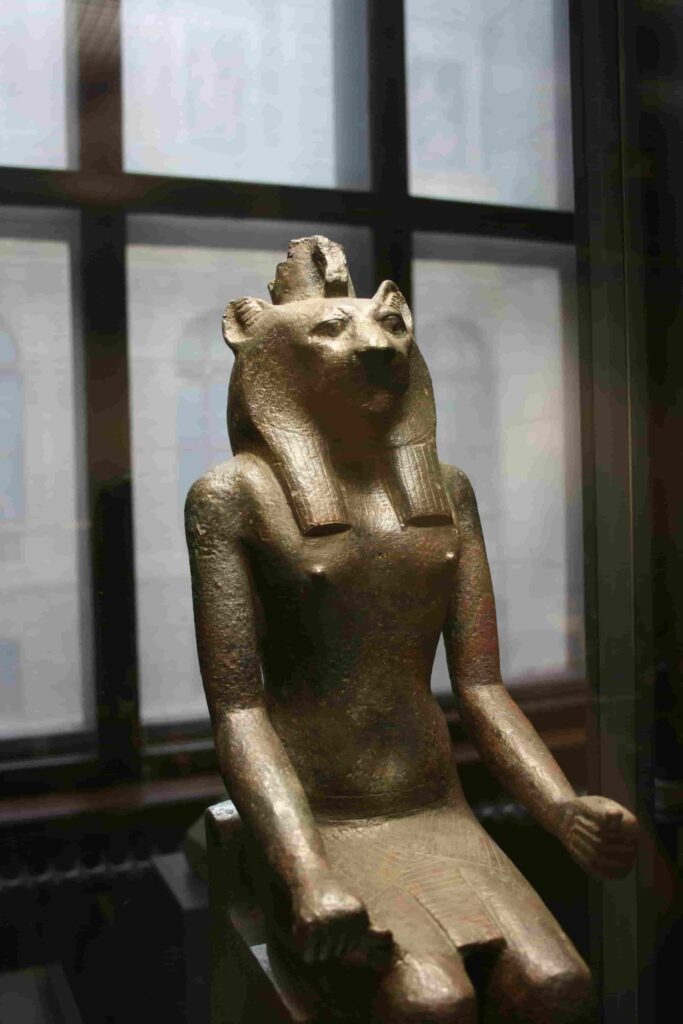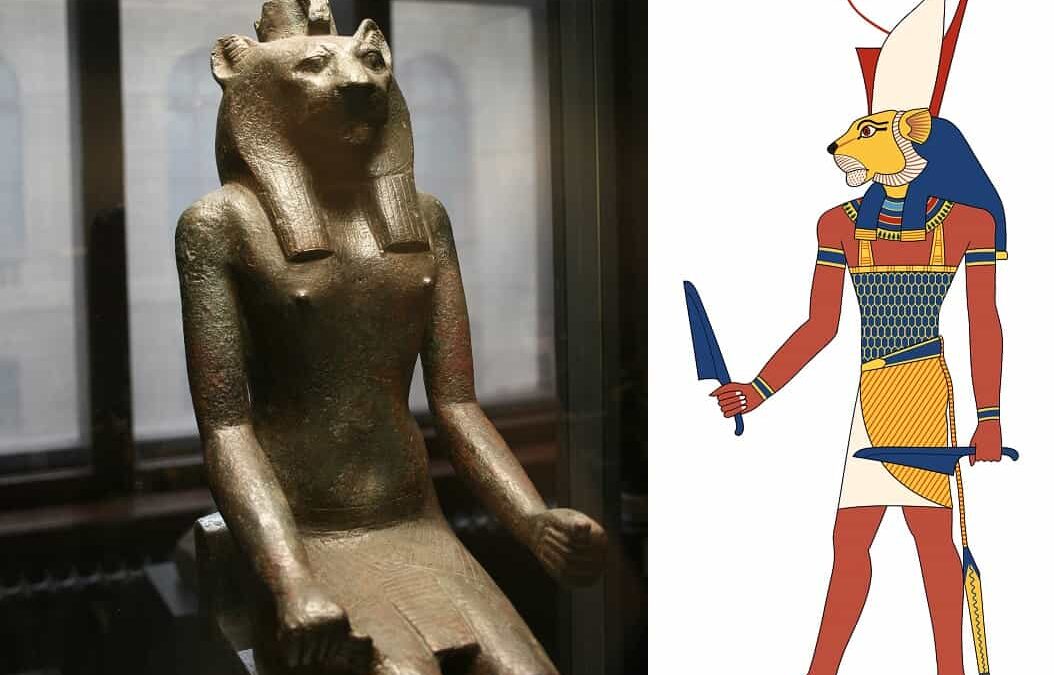Maahes, also known by various names including Mahes, Mihos, Miysis, Mios, and Maihes, was a prominent deity in Ancient Egyptian religion. His name translates to “he who is true beside her.”
Emerging in the capital of the XI nome of Lower Egypt during the Old Kingdom, Maahes’ divine status became formalized only in the Middle Kingdom, and his influence expanded across Egypt by the New Kingdom.
Representation and Iconography
Maahes is typically depicted as a man with the head of a lion. He is often shown wearing the Atef crown, associated with Upper Egypt, or adorned with a headdress featuring a solar disk and a uraeus, symbolizing protection and sovereignty.
Mythological Significance
In mythology, Maahes is the son of Ra, the sun god, and is known as a deity of war. He is famously depicted aboard Ra’s solar barque, where he battles the serpent Apophis (Apep) every night. His formidable appearance and role as a warrior deity also designate him as the guardian of sacred spaces.
Titles and Attributes
During the New Kingdom, Maahes was venerated as a fierce warrior and was honored with titles such as “Lord of Carnage,” referencing the desert lion from the Old Kingdom, “Lion with a Fierce Gaze,” and “Soul of Bastet.” In the Pyramid Texts, he is equated with the lion, reinforcing his connection to strength and protection.
Maahes is known to protect the king in battle and guard the entrances and sanctuaries of holy sites in his feline form. In times of danger, he could manifest as a statue, symbolizing his vigilance and readiness to defend.
Cult and Worship
Pharaoh Osorkon III of the Twenty-third Dynasty constructed a temple for Maahes in Per-Bastet, known as Bubastis to the Greeks, where he was revered as the offspring of Bastet and Ra.
Additionally, in Memphis and Leontopolis, Maahes was associated with Nefertum and considered the progeny of Sekhmet and Ptah, reflecting his widespread veneration across different regions and deities.







